
User certificate issued by local Enterprise CA, where user is member of AD security group
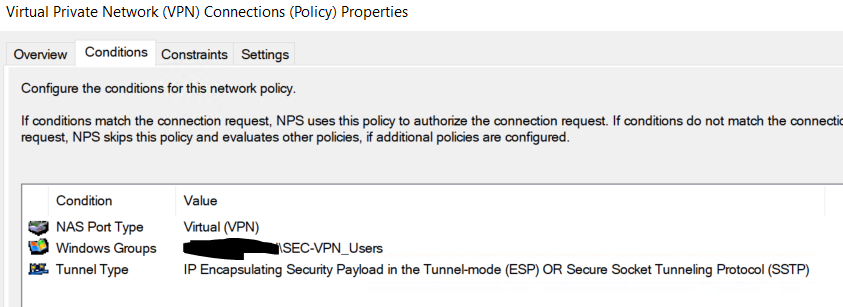
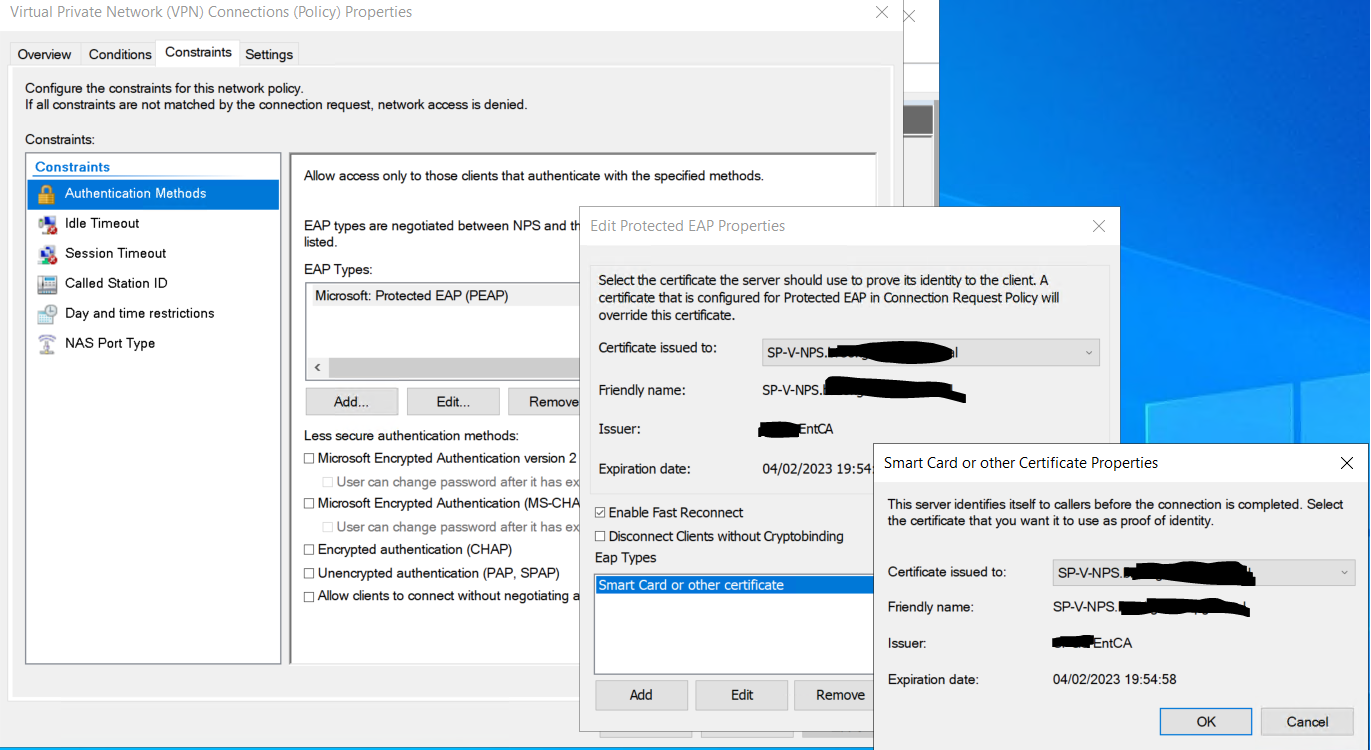
This browser is no longer supported.
Upgrade to Microsoft Edge to take advantage of the latest features, security updates, and technical support.
We have a fully functioning VPN setup for our Windows 10 devices using IKEv2 to two load balanced Windows RRAS servers. Both servers works with Windows devices, but only one server works with iPhones devices.
The permutations result in error messages on the iPhone:
User authentication failed
Logs from Server 2016 Event Viewer:
CoId={8AB4D661-0463-0579-09F9-86933397C252}: The following error occurred in the Point to Point Protocol module on port: VPN2-127, UserName: <Unauthenticated User>. Negotiation timed out
I have compared all the settings, but cannot figure out why one server is complaining about authentication. Please help.

User certificate issued by local Enterprise CA, where user is member of AD security group


OK, that is true, so I reconfigured NAS to also include EAP (Smart card or certificate)
But that still fails with error:
Authentication Details:
Connection Request Policy Name: Virtual Private Network (VPN) Connections (Request)
Network Policy Name: Virtual Private Network (VPN) Connections (Policy)
Authentication Provider: Windows
Authentication Server: SP-V-NPS.domain.local
Authentication Type: EAP
EAP Type: Microsoft: Smart Card or other certificate
Account Session Identifier: 323336
Logging Results: Accounting information was written to the local log file.
Reason Code: 16
Reason: Authentication failed due to a user credentials mismatch. Either the user name provided does not map to an existing user account or the password was incorrect.
And RRAS VPN server states the same:
CoId={8C77F768-E985-E3B8-6378-820F497CC12A}: The user connected from xx.yy.zz.hh but failed an authentication attempt due to the following reason: The connection was prevented because of a policy configured on your RAS/VPN server. Specifically, the authentication method used by the server to verify your username and password may not match the authentication method configured in your connection profile. Please contact the Administrator of the RAS server and notify them of this error.
As to IOS profile:
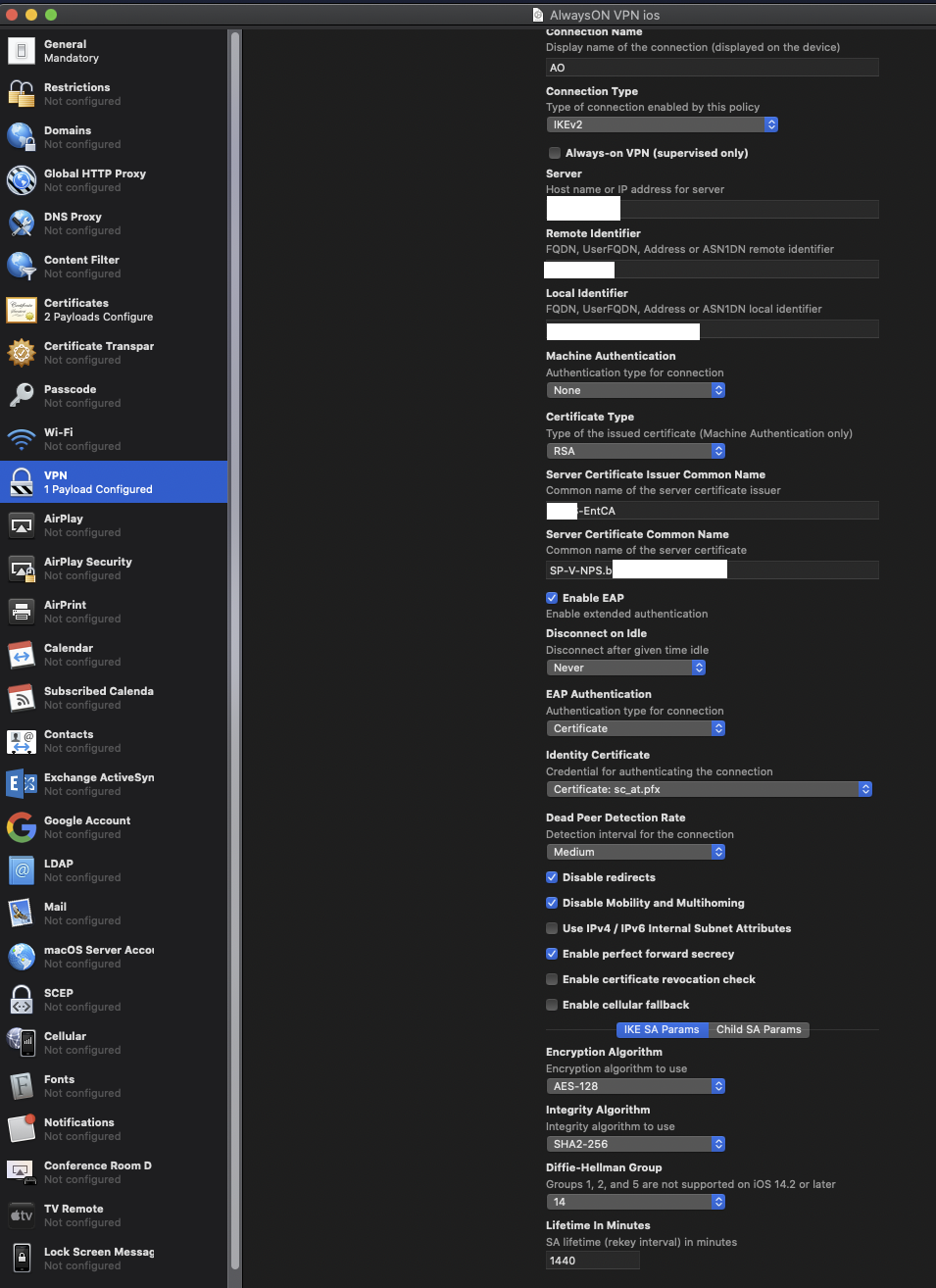
Yes, certificate certainly is correct (same one is used on Windows machine for VPN connection)
OK, run the trace, tried to connect from IP 85.255.235.97
Text converted log attached176720-vpnserverrras.txt
I see it is [Microsoft-Windows-RRAS]Tunnel ID: 0x27, Failure reason: 812
Looking for this error, I see this but I do not have mismatch in Policy, it is correct
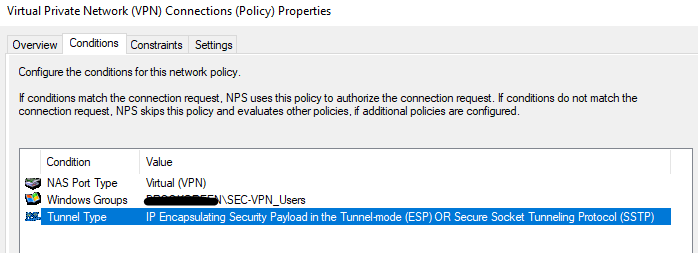

Hello Seb,
For some reason, I always get this error when trying to send my response:
Access Denied
You don't have permission to access "http://learn.microsoft.com/answers/answers/496572/post.html" on this server.
Reference #18.9ffa6d68.1645531433.596af7
Here is an image of the response:
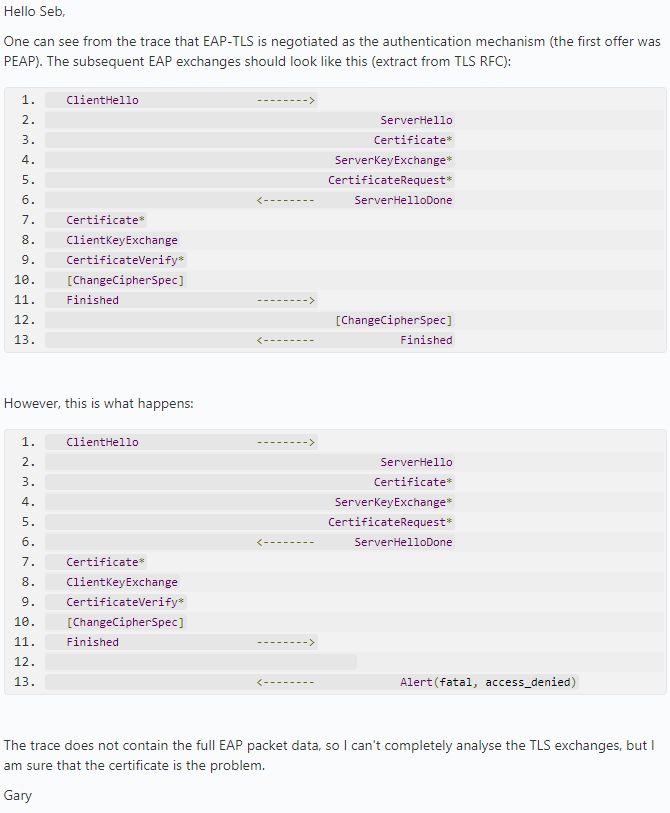
Gary
But the same certificate works in both Windows & MacOS clients
What could be different about iOS?
And which certificate would that be (I assume the user certificate explicitly specified in mobileconfig file)
Both (VPN server & user) certificates have entries in SAN, as per this
Seb